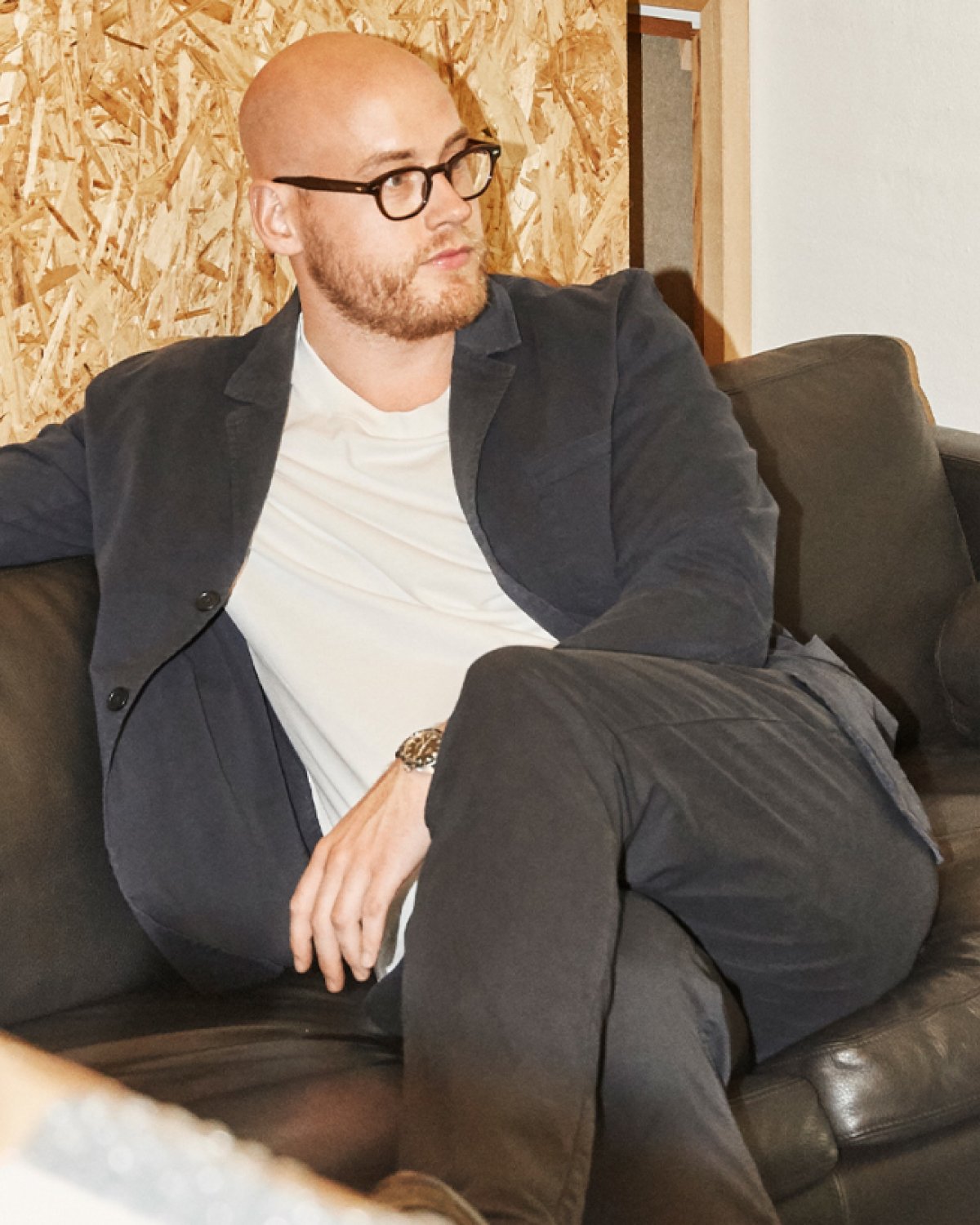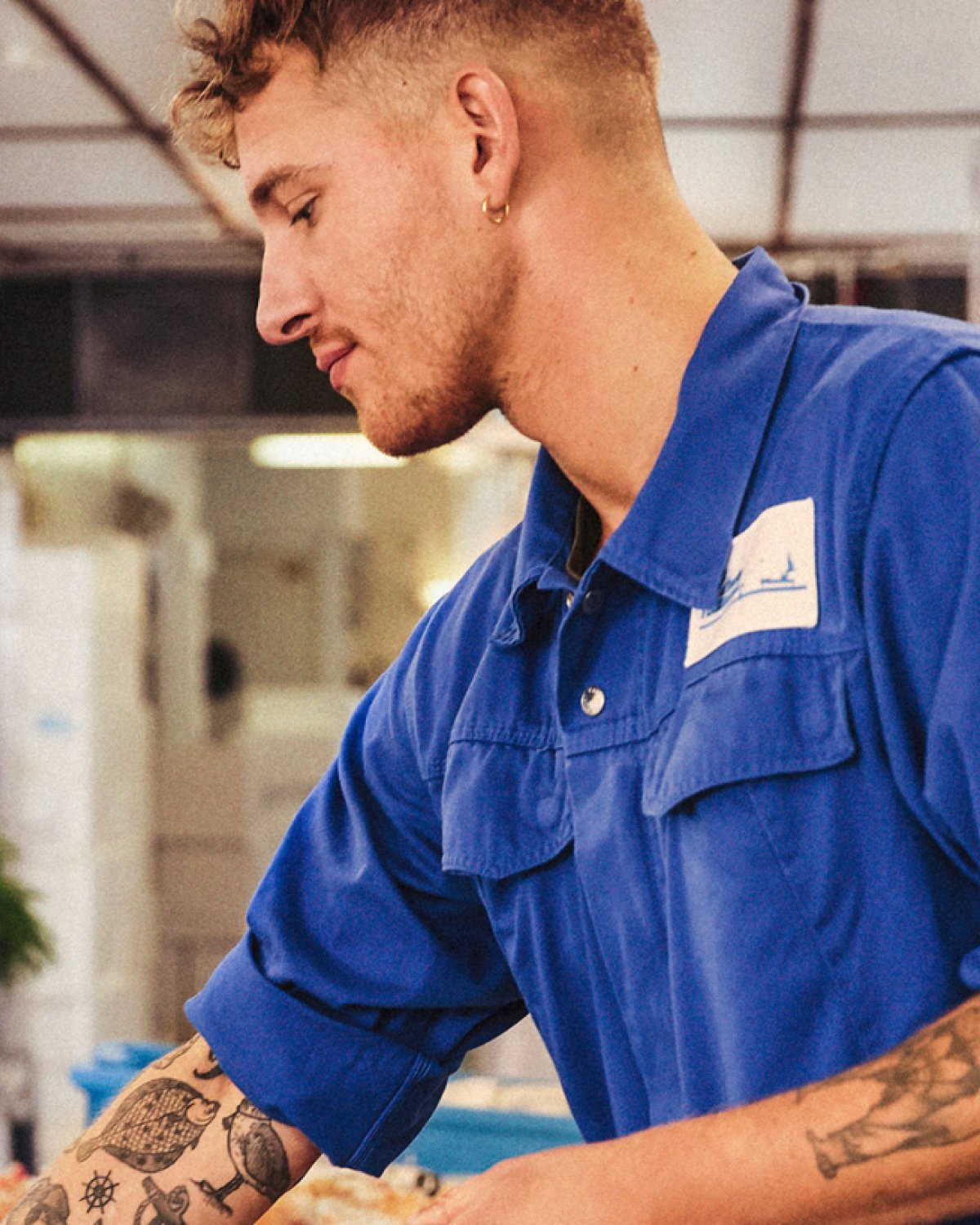With strong ties to both the hyperlocal and global art scene, Jacob Bjørn has established himself as a modern-day gallerist with a clear vision of which mark he wants leave on the world of art. Here, Jacob, thanks for taking your time to meet with us. Tell us about your gallery and the idea behind it.
“My gallery is established with an idea to exhibit my own generation of artists. That’s my main interest. When you work with young artists, it’s hard to make it a business to begin with. But you keep grinding and learning every day, and all of a sudden it’s there and you have a business and a name.”

It wasn’t always like that?
“Not at all. I like to call my first, formative years with the gallery my hungry years. Both because the gallery wasn’t financially viable at all, and metaphorically speaking I was hungry from not having any money, but also because i didn’t give up. I stayed hungry to succeed.”
What’s your background?
“I studied aesthetics and culture at the university of Aarhus. I only needed to hand in my final thesis, but instead of studying art theory I opened a gallery to get hands-on.”
And how did that go?
“When I started the gallery I sat myself behind the desk and waited for things to happen. These artworks will speak for themselves, I thought, haha.”
How long did that strategy last?
“Too long. 3-4 years. I was young and not a good gallerist. But I’ve learned a lot, and now I have come out on the other side with the same artists, and that I’m proud of. The good relations are built up over time. Setting up a show, selling everything and earning some money is not that hard, but it’s just not a part of my plan. It’s not the bigger project, it’s not the vision.”

And you stayed in Aarhus.
“After the first few years when I began to get traction, the natural next step would be to move the gallery to Copenhagen. But because of my family I decided to stay in Aarhus. And i thought to myself; either i’m going to come up with an imaginary gap in the market, or I’m insisting on it being there and just search for it through hard work. And i found it. There might be fewer buyers here than in and around Copenhagen, but we have the same amount of amazing museums and not at all the same amount of galleries. That leaves an incredible amount of space for a gallerist like me. And at the same time the city itself has grown in size and in ambitions. You see more Balenciaga shoes in Aarhus than ever.”
I can tell. Speaking of, let’s talk money. Art is extremely connected to money and at the same time completely detached from capitalism.
“Exactly. Talking about money in art can quickly turn into bad taste. It’s quite illogical actually, because without buyers or people who pay to visit museums or state-funded working grants, art would be nowhere. It’s a very puritan idea, and also infantile. Art and commerce are very closely connected.”

Does an artwork have an ideal buyer?
“Absolutely. I don’t necessarily think of an artwork as something to be sold. I rather think of it as something that needs to be placed. There are definitely ranks when it comes to museums and collectors. The hierarchy shines through right away. You want to avoid collectors who are reselling artworks on auctions. The price of an artwork is also changing depending on the day of the auction. And if it sells for too small an amount, it devaluates the rest of the portfolio. You want to avoid that. artworks have bad days too. And sometimes the market simply isn’t there.”
But can’t you just wait until the market has matured again?
“Yes. An artwork doesn’t decrease in quality because of a financial crisis. It’s the same artwork. It’s the same artist. That’s why you want to work with the real collectors who appreciate art for what it is and not the financial value of it. They don’t care about economic trends.”
Being a gallerist means that you work actively on positioning your artists. How do you approach that part of your work? There must be a lot of strategy going on there?
“There is a clear paradox: most artists are autonomous units, working with almost no commercial understanding or interest. And at the same time they are represented by their galleries that are commercial and here to sell. But if you have a good relationship with the artist you represent, you discuss these things openly. You decide whether the artist should be a commercial artist aimed at private buyers who want art in their home, or a part of a cultural heritage where museums are the target.”
And you prefer?
“Cultural heritage. Always.”
Why?
“Because that’s the mark you leave behind. Art becomes the predictor of the state of society. How will the future generation look back at our place in time and what will they see? That’s the role of the art we put in our museums.”
So I guess it’s about building relationships with the museums?
“A lot. All the time. If I want an artist to be remembered, I have to make him attractive for the museums and not only for a private buyer in a large house.”
And then what?
“You meet with the director. Explain what you believe in and why he or she should listen and eventually buy. And then they turn you down 5-8-10 times. Often because the first sell is the hardest. You grind and hustle, and all of a sudden you break through.”

How many times do you typically approach a buyer?
“It depends on your connection. And if you visit the same bars.”
Really?
“Yes. Everything comes down to networking and knowing the right people. You need to understand that if you are doing business with each other, you have to not be strangers.”
How does that show?
“After each opening, the gallery hosts a dinner for buyers and curators from museums, where each part get to mingle and meet under informal circumstances. A result of such a dinner showed this week, where a museum invited us over for a meeting about an artist and whether they should add him to their collection. It’s not something that happens with a glass of water in hand on an average afternoon. It takes a dinner and a few glasses of wine, and it’s just the name of the game.”
But let’s be honest, all industries are like that. Consultancies, lawyers, fashion, the music industry. You seal the deal over a drink. If you believe it’s any other way, you are straight up naive.
“Exactly. And truth be told, it’s a part of the game that i really enjoy. Mixing business with pleasure goes a long way.”
All content comes from the website : https://minimumfashion.com/













